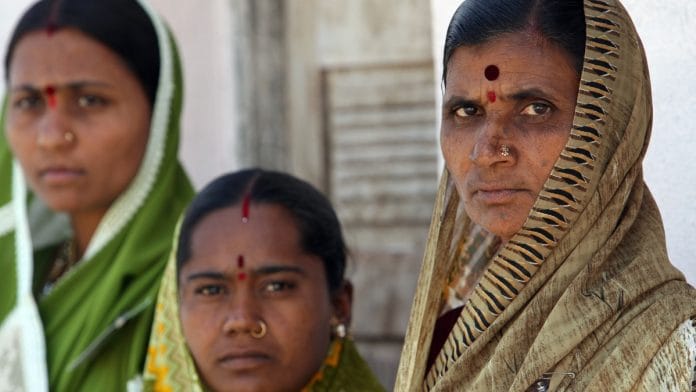South Asia stands at a pivotal juncture. As the fastest growing region in the world, with booming economies and a flourishing middle class, it is poised for a future of unparalleled prosperity. A critical obstacle threatens to impede this progress, however: the persistent digital gender divide.
Closing this digital gender divide – the gap between men and women’s access to and use of technology – is not just a matter of equality but a critical economic imperative.
The majority of the estimated 2.6 billion people currently not connected to the internet are women and girls. Although this gender gap is decreasing in South Asia, women in the region are still 31% less likely to use mobile internet. Without connectivity, women are locked out of significant employment opportunities and job training, unable to access government programmes, and excluded from critical health and financial services.
The roots of South Asia’s digital gender divide
Over the last 25 years, digital access has grown exponentially across South Asia. In India, internet usage has quadrupled in the last decade. Growth has happened in both urban and rural areas – at the end of 2023, there were more than 1.15 billion wireless mobile users in the country with the majority of this traffic coming from 4G data. However, this wave of progress has not been gender neutral. Women and girls in South Asia continue to face numerous barriers to getting online. Cultural norms, as well as well as systematic discrimination in core aspects of society from commerce to politics, have all played a part in creating a significant gender gap in digital access and literacy.
Many of the structural inequalities women experience offline contribute to inequality online. South Asia has some of the lowest education and labour participation rates for women compared to the rest of the world. A lack of connectivity restricts women’s career prospects, confining many to low-paying, informal sectors of the economy. By 2030, the number of global digital jobs is expected to rise to around 92 million, perpetuating a vicious cycle of disempowerment.
Entrepreneurship, a critical driver of economic growth, also suffers. South Asian female entrepreneurs face significant challenges in accessing digital tools, as well as the credit and financing necessary for starting and growing their businesses. Experts believe that, while 20-25% of businesses in India are run by women, less than 2% are able to raise capital.
Even as devices and data plans become more affordable, cost remains a significant hurdle for many women in South Asia. This is particularly true for those affected by poverty’s intersection with factors like disability or belonging to a marginalized social group. When it comes to STEM fields, women only make up 25% of college and university students across South Asia, and are severely underrepresented in the STEM workforce. A limited number of women in STEM fields restricts the talent available for technological advancement and reduces the pool of female role models for aspiring girls.
Women are also missing in senior leadership and positions of authority, holding only 4.7% of CEO positions in India. It will take 134 years to close the global gender gap – roughly five generations beyond the 2030 Sustainable Development Goal target. When considering gender-based gaps focused on economic participation, South Asia ranks last as a region worldwide due to low labour-force participation rates for women and significant gender disparities in leadership roles.
An opportunity worth billions
Addressing the digital gender divide is more than just a social issue – it’s an economic one. Research suggests that connecting 600 million girls worldwide to the internet could boost global GDP by US$13–18 billion in just three years. Out of these girls, 170 million — nearly 1 in 4 — are from South Asia. Greater connectivity and digital literacy for girls and women means greater participation in the labour market, leading to increased household incomes, better health outcomes, and overall improved quality of life for women and their families.
Bridging the digital gender gap is a long-term investment that will pay economic and social dividends for generations. Making meaningful progress will require a multi-pronged approach.
Governments can play an important role in making technology more accessible for women and girls by implementing targeted subsidy programmes that offer financial assistance for smartphones, laptops and data plans. They can also help design digital literacy programmes specifically for women and girls. Schools could integrate ICT courses and skill-building workshops aimed at girls into their curricula, while adult women could partner with local civil society organizations for training.
Conditional cash transfers for digital skill training can also be effective. This provides financial incentives for women who enroll in digital literacy programs and obtain certain levels of proficiency. Pairing these with women’s microcredit associations can provide direct access into communities and existing support networks.
The EDISON Alliance has served as a powerful platform, bringing such stakeholder groups together to address key barriers to universal digital inclusion through community partnerships and best practices. It has reached its goal of enhancing the lives of 1 billion people by 2025 through affordable and accessible digital solutions. Partner initiatives are already creating a significant impact in countries like Bangladesh and Pakistan, supporting women’s health, education and financial inclusion across the region through the power of connectivity.
But so much more must be done. We need a concerted effort from policymakers, companies and educational institutions to address the digital gender gap. By empowering women with technology, we can invest in a world where their voices are heard, their talents are nurtured and their potential for innovation is unleashed.
This article originally appeared on Hindustantimes.com
Kelly Ommundsen, the author, is the Head of Digital Inclusion and Member of the Executive Committee at the World Economic Forum
This article previously appeared in the World Economic Forum.
Also read: Manufacturing with AI can drive a sustainable future. Here’s how






